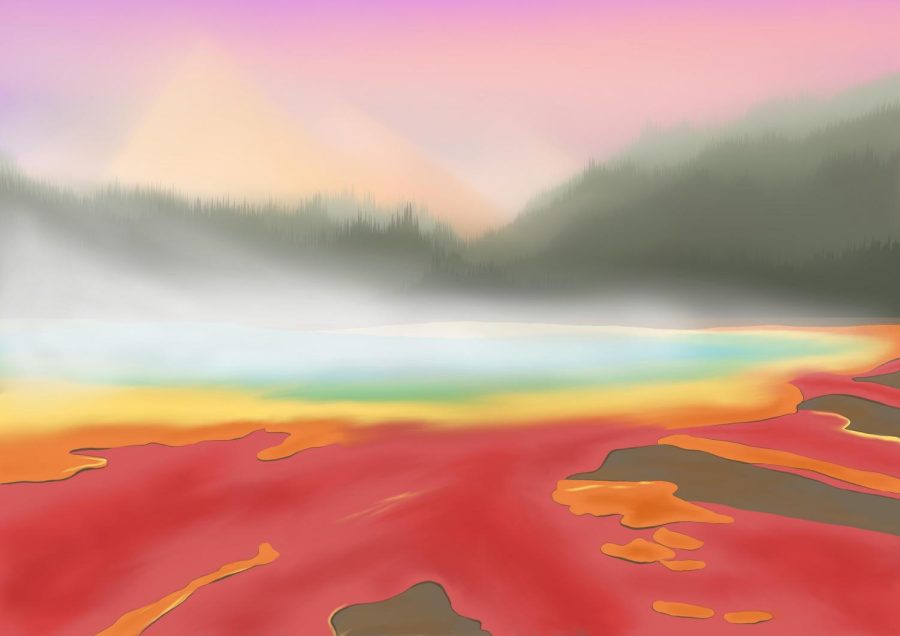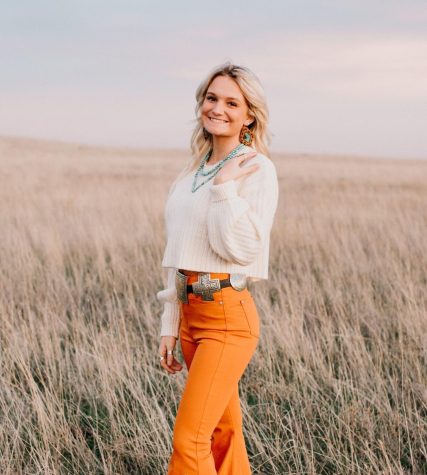Ancient Yellowstone eruptions helped form inland Northwest
Regional chapter of Ice Age Floods Institute hosted virtual seminar focusing on geology of Yellowstone Country
Yellowstone National Park is home to breathtaking views, lively wildlife and a super volcano. Professor Rob Thomas says there is no need to worry about that last part though.
February 10, 2022
The Wenatchee Valley Erratics Chapter of the Ice Age Floods Institute held a virtual seminar Tuesday night on the formation of Yellowstone Country.
The “Geology of Yellowstone Country” seminar was held over Zoom and featured guest speaker Rob Thomas, regents professor of geology at University of Montana Western. Thomas is the co-author of the second editions of “Roadside Geology of Yellowstone Country” and “Roadside Geology of Montana.”
The seminar covered all of the ins and outs of Yellowstone country, starting with its geological history and how it still affects surrounding regions today.
“The take-home is Yellowstone played a big role in the formation of the basin and range in southwest Montana and is largely responsible for the most recent Northwest trending basins and ranges in southwest Montana,” Thomas said.
Thomas lives extremely close to the Yellowstone caldera, and often gets questioned by worried students about the possibility of an eruption. However, he said there is nothing to fear at this time.
While there have been three eruptions over the last 2.1 million years, Thomas said there is a low probability of eruption anytime soon.
“I always tell students, you’re much more apt to be killed in a back alleyway in Butte, Montana than you are in an eruption of Yellowstone,” Thomas said. “No offense, of course, to my good friends in Butte, Montana.”
When looking at Yellowstone’s eruption history, Thomas said he likes to focus on the first eruption, Huckleberry, which occurred 2.1 million years ago. 600 cubic miles of material was ejected from Huckleberry, as a comparison, only 0.1 cubic miles of material was ejected by the 1980 Mount St. Helens eruption.
“This eruption is catastrophically larger than stratovolcanoes like Mount St. Helens. There’s nothing else like this; this is the largest explosive volcanic eruption on earth that’s preserved,” Thomas said. “So, these three eruptions of Yellowstone are not comparable by anything else, … they are like nuclear explosions to a firecracker.”
Ken Lacy, program chair of the Wenatchee Valley Erratics Chapter of the IAFI said that although their main focus is floods and the ice age, the chapter wanted to feature a speaker that was well versed with Yellowstone due to its importance and public fascination.
Lacy said the IAFI was founded in 1995 as an educational nonprofit to educate the public about the great Ice Age floods that occurred.
“They came out of Montana and worked their way to the Pacific Ocean. And there may have been as many as 100 of them over 3000 years,” Lacy said. “These are the largest floods of freshwater in the history of the world, ever. So it isn’t as though this is a little ho-hum-thing, I mean, these floods were absolutely massive.”
Lacy was a founder of the Wenatchee Valley Erratics Chapter, created in late 2001. The Erratics chapter was the first “chapter” within the IAFI, and now there are 11 chapters that span across the route of the Ice Age Floods, starting in Glacial Lake Missoula, Mont. and stretching to the Pacific Ocean near Portland.
In 2009 Congress authorized the National Park Service to create the nation’s very first National Geographical Trail, and it will be none other than the Ice Age Flood route. It will start deep in Montana and wind to the Pacific Ocean, following the flood route that the Ice Age water took.
The Wenatchee Valley Erratics Chapter typically gives geology tours to the people of Wenatchee Valley, but with the pandemic, the chapter has had to make do with Zoom events like the one on Tuesday. Lacy said it has helped ensure there are still educational programs and other ways to get involved with the organization.
“I guess you could find someone, somewhere that could argue that it isn’t important because I mean, it’s just talking about these massive floods that came rolling through here thousands of years ago,” Lacy said. “It’d be nothing for us to get 40 or 50 people on a big bus and go running around the countryside, showing ‘em all this cool stuff. It’s just interesting; people just get such a kick out of this.”










